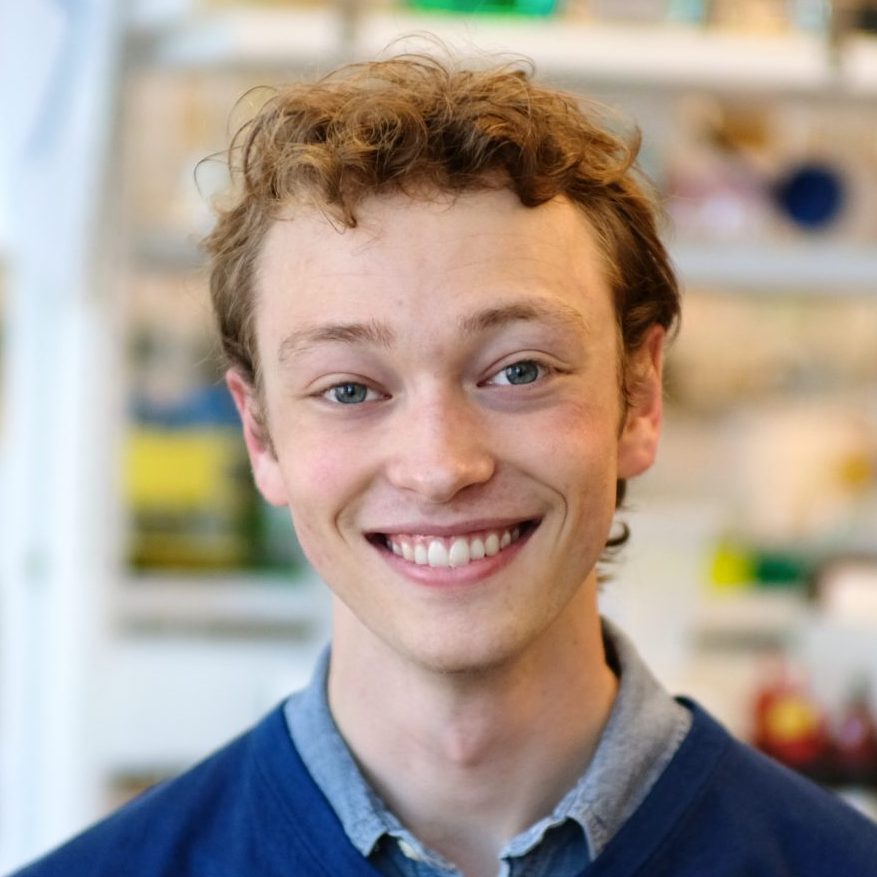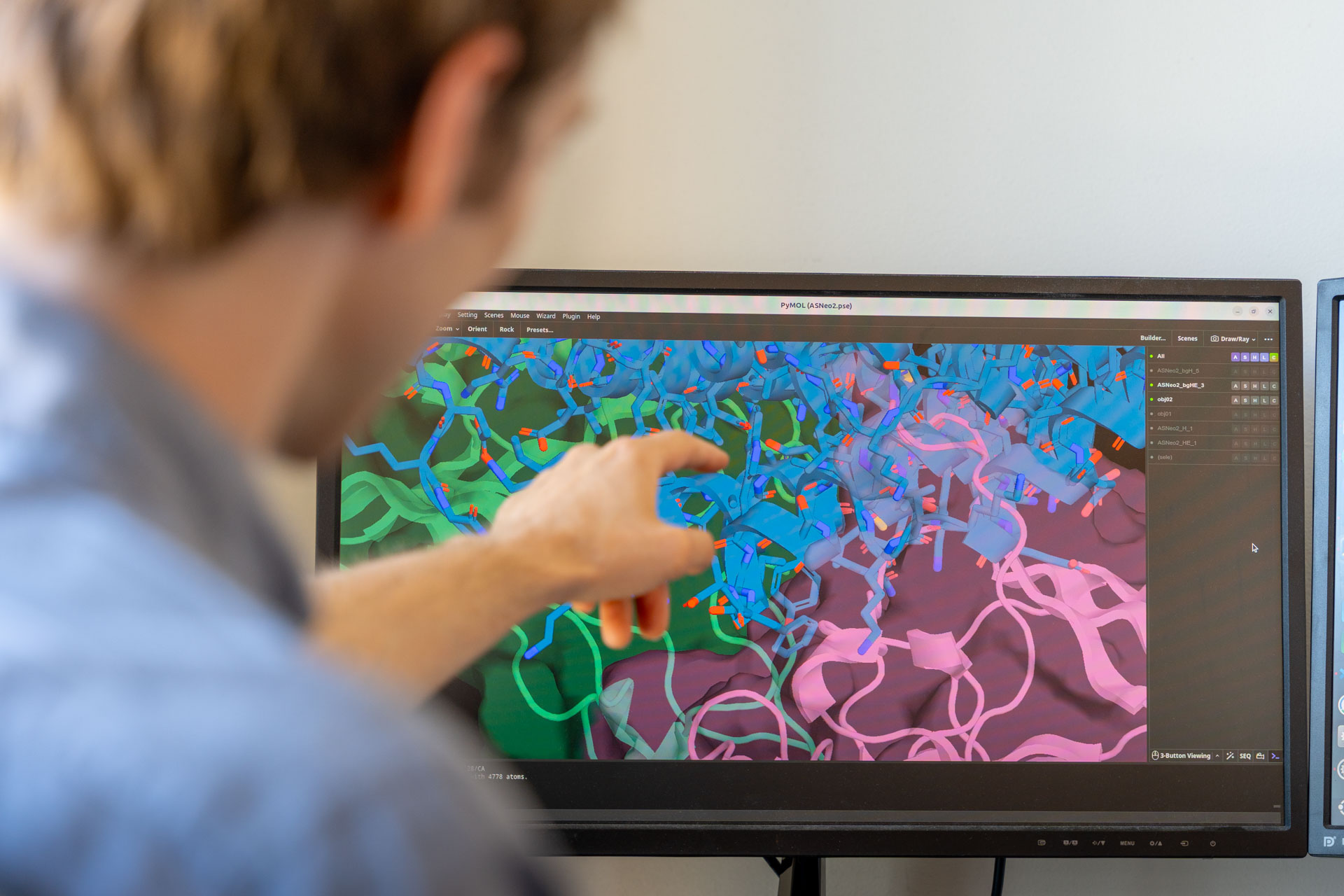Publication
Design of facilitated dissociation enables timing of cytokine signalling
Authors: Adam J. Broerman, Christoph Pollmann, Yang Zhao, Mauriz A. Lichtenstein, Mark D. Jackson, Maxx H. Tessmer, Won Hee Ryu, Masato Ogishi, Mohamad H. Abedi, Danny D. Sahtoe, Aza Allen, Alex Kang, Joshmyn De La Cruz, Evans Brackenbrough, Banumathi Sankaran, Asim K. Bera, Daniel M. Zuckerman, Stefan Stoll, K. Christopher Garcia, Florian Praetorius, Jacob Piehler, David Baker
Lead Authors

Proteins often cling to other molecules to drive immune signaling, metabolism, and more, but this stickiness can be a problem for protein-based medicines. For example, once an antibody drug or cell therapy begins working in the body, it can be difficult to halt its activity if dangerous side effects emerge.
To help address this, we have created the first switchable protein systems that maintain full activity but can be rapidly shut down on command. Published today in Nature, this project was led by Adam Broerman, a graduate student in the Baker Lab.
Driving changes
Instead of optimizing how tightly proteins stick to partner molecules, we developed a new strategy for directly controlling how long they stay bound. Adam used computational protein design to create custom proteins that latch onto target molecules. Once a separate effector molecule is added into this mix, it shifts the bound complex into a strained configuration and causes it to fall apart.
“In one experiment, interactions that would otherwise last for 20 minutes completely broke apart in just ten seconds. I was so surprised by that speed-up that I had to repeat my measurements a few times before I could really believe it.”
Adam Broerman
Taming interleukin-2
We applied this technology to interleukin-2 (IL-2), a powerful immune protein that has long been investigated as a cancer therapy. IL-2 can effectively stimulate the immune system to attack tumors, but it’s also notorious for severe, sometimes life-threatening side effects.
The team created a switchable version of IL-2 that activates human immune cells in a dish and then silenced them on demand with an added effector. This new form of control could make future cancer immunotherapies more tunable, potentially giving patients protection from runaway side effects or allowing doctors to administer high-dose, short-duration treatments to achieve better cancer-killing results.
“One way to control a medicine is through dose. We’ve added a second lever by designing molecules that can be switched off rapidly, even after they’ve taken full effect.”
David Baker, IPD director
Faster diagnostics
The same technique was also used to create improved molecular sensors for SARS-CoV-2, the virus that causes COVID-19. In the study, a switch was introduced into a light-emitting enzyme, yielding a bright signal that could be toggled in seconds. This was adapted into a rapid coronavirus sensor — one that responds about 70 times faster than previous protein-based tests for SARS-CoV-2. The same approach could yield rapid sensors for disease markers, environmental pollutants, and other important chemicals.
Rethinking protein control
“We solved ten crystal structures that captured these proteins in different states. Seeing the atomic details of how the switches work gave us confidence that the designs were functioning as intended, and it will help guide future applications of this approach,”
Asim Bera, IPD crystallography core lead
Until now, drug development has focused on two main dials: how strongly a therapeutic binds to its target, and how specifically it recognizes the right target. This project adds a third dial — how long they stay bound. That simple addition changes how we can design protein-based medicines and tools.
Additional Information
This study was led by the Institute for Protein Design, a research center at the University of Washington focused on creating molecules that help address challenges in medicine, technology, and sustainability. The Piehler Lab at Osnabrück University and the Stoll Lab at the University of Washington contributed biophysical measurements, the Garcia Lab at Stanford University contributed cell measurements, and the Zuckerman Lab at Oregon Health & Science University contributed molecular dynamics simulations.
This study was supported by The Audacious Project at the Institute for Protein Design, Gates Foundation (OPP1156262), Open Philanthropy, Howard Hughes Medical Institute, Nordstrom Barrier Institute for Protein Design Directors Fund, Microsoft, National Institutes of Health (R0AI160052, GM115805, GM151956, AI-51321, S10OD021557, P30GM133893, P30GM124165), National Cancer Institute (4K00CA274708), National Science Foundation (MCB 2119837), Deutsche Forschungsgemeinschaft (PI 405/15, SFB 1557), U.S. Department of Energy (KP1607011, DE-AC02-06CH11357, DE-AC02-05CH11231), and a CRI Irvington Postdoctoral Fellowship (315511).
